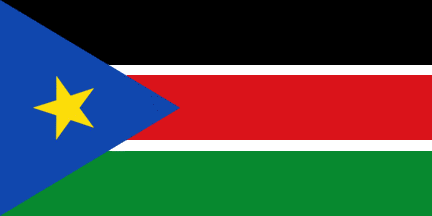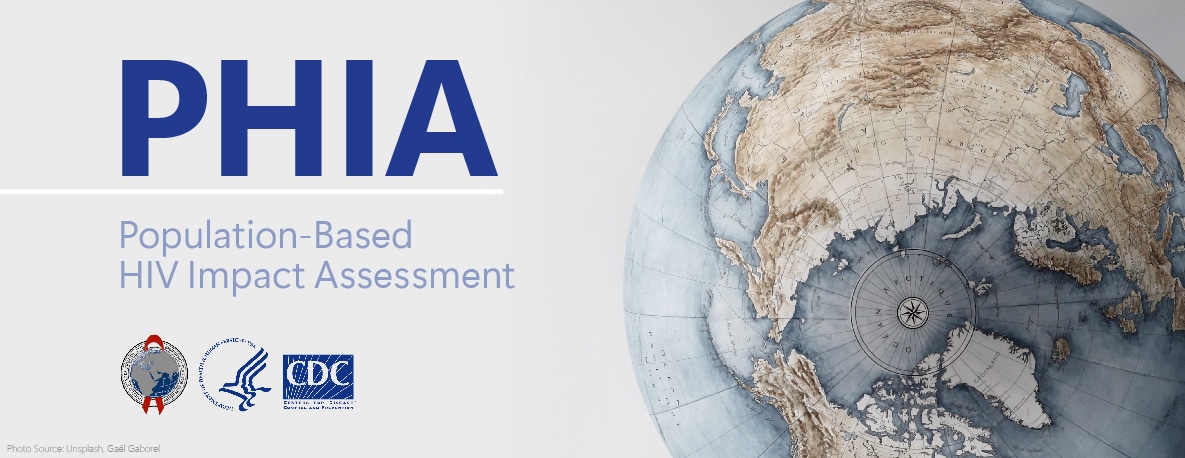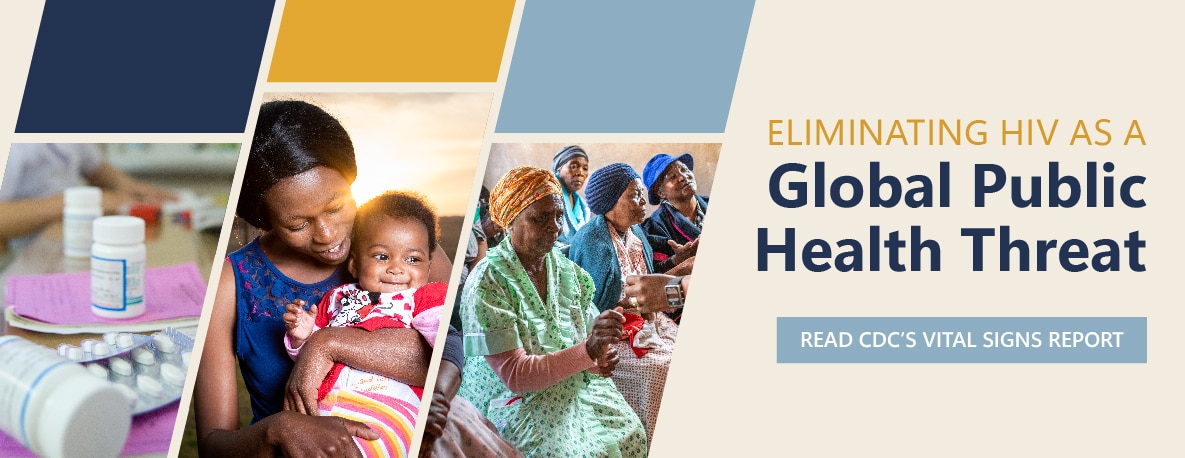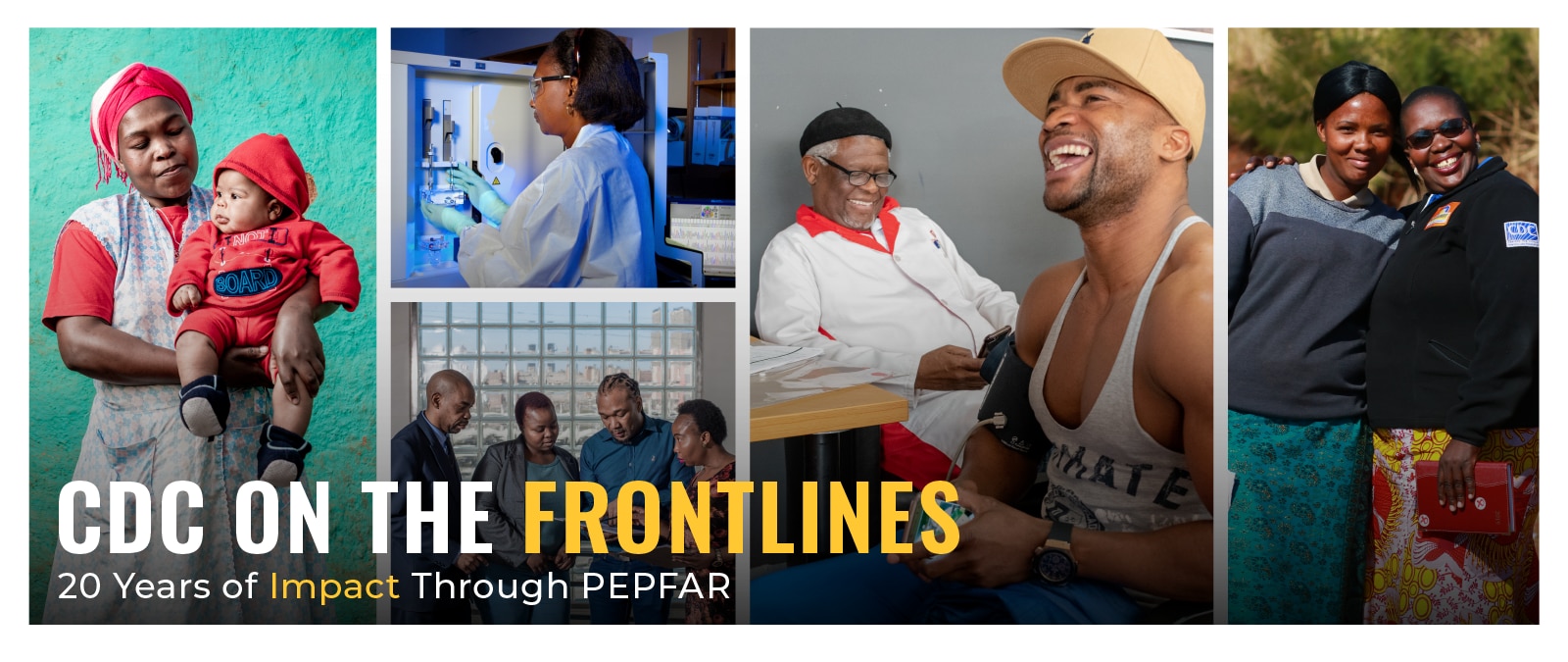South Sudan Region Country Profile

South Sudan Country Profile
Discover more about CDC’s work in South Sudan by viewing our detailed country profile
Country Overview
CDC collaborates with South Sudan’s Ministry of Health; its National AIDS Commission; the Global Fund to Fight AIDS, Tuberculosis, and Malaria; and other partners to strengthen the country’s health system. This is achieved by providing resources and technical assistance in adult and pediatric HIV treatment, HIV/tuberculosis (TB) screening activities, prevention of mother-to-child transmission (PMTCT) for all pregnant and lactating women who are HIV-positive, targeted prevention programming, laboratory strengthening, blood safety, and enhancing health information systems. CDC also supports the Ministry in strengthening the country’s health system by operationalizing the National Public Health Laboratory and National Blood Transfusion Center services, quality assurance and accreditation programs, and enhancing national HIV surveillance systems as well as health and laboratory management information systems.
Per Capita GNI
N/A
(2022)
Population (million)
10.9
(2022)
Under 5 Mortality
98.7/1,000 Live Births
(2021)
Life Expectancy
55 Years
(2021)
Estimated HIV Prevalence
1.9%
(Ages 15-49): (2022)
Estimated AIDS Deaths
6,100
(Age≥15) (2022)
TB Treatment Success Rate
82%
(2020)
Estimated TB Incidence
227/100,000
(2021)
Estimated Orphans Due to AIDS
140,000
(2022)
TB patients with known HIV-status who are HIV-positive
13%
(2021)
Reported Number Receiving Antiretroviral Therapy (ART)
49,985
(Age≥15) (2022)
Strategic Focus
South Sudan continues to face a prolonged conflict, famine, some of the worst health outcomes in the world, and an HIV response that lags more than a decade behind other neighboring countries.
The Centers for Disease Control and Prevention (CDC) collaborates closely with the Ministry of Health (MOH), South Sudan AIDS Commission, Global Fund, and other key partners to strengthen the fragile health system by providing resources and technical assistance in adult and pediatric HIV treatment, HIV/Tuberculosis (TB) collaborative activities, prevention of mother-to-child transmission(PMTCT) for all HIV-positive pregnant and lactating women, targeted prevention programming, laboratory strengthening, blood safety, and strategic information.
Essential Health Services: CDC, through the U.S. President’s Emergency Plan For AIDS Relief (PEPFAR), supports HIV prevention and treatment services in the highest prevalence areas of South Sudan, focusing on increasing service capacity and quality through mentorship, supportive supervision at all treatment sites, and program monitoring. There are eight CDC supported service delivery partners providing facility-level support for the transition to Test and START supporting MOH to achieve the UNAIDS 90-90-90 targets.
Health Systems Strengthening: CDC provides extensive assistance to the MOH in strengthening the health system, including operationalizing the National Public Health Laboratory and National Blood Transfusion Center services, quality assurance and accreditation programs, strengthening national HIV surveillance systems and the health and laboratory management information systems.
Key Activities and Accomplishments
Sustained Essential Health Services: Program data indicates CDC directly supports approximately 85% of PMTCT and 70% of HIV treatment programs in the country, including 30% of HIV commodities. Despite access challenges, CDC implementing partners continue to provide HIV testing and treatment support, and have established Voluntary Medical Male Circumcision (VMMC) at Juba Military Hospital.
HIV /TB Services: From 2016 to 2017, HIV testing has increased and a greater number of HIV positives have been diagnosed and are receiving antiretroviral treatment (ART). Key populations (KP) such as men having sex with men (MSM) and female sex workers (FSWs) were reached with HIV prevention services. Through partnerships and coordination between the MOH, CDC and Global Fund, there was an increase of patients including children, who were provided ART, from 19,394 in 2016 to 22,700 by June 2017. CDC continues to work with the national TB and HIV programs and other stakeholders to improve TB/HIV collaborative activities to ensure that all TB patients are tested for HIV and that all who test positive are appropriately linked to treatment, and all HIV positives identified at CDC supported facilities are screened for TB and linked to TB diagnostic and treatment services.
HIV surveys. CDC previously supported three rounds of antenatal clinic (ANC) surveys (2007, 2009 and 2012) and is currently supporting the MOH in collaboration with Global Fund in conducting the 2017 ANC survey. PEPFAR also supported two bio-behavioral surveys of female sex workers in Juba (2016) and Nimule (2017).
PEPFAR five-year strategy: CDC led the development of an interagency five-year PEPFAR strategy that focuses programs on high prevalence areas with targeted activities. The strategy is to strengthen national ownership of the HIV response and activities including HIV testing services, scaling up Provider Initiated Testing and Counselling, treatment services, PMTCT, prevention among key populations, quality assurance, laboratory systems, and strategic information strengthening.

Tracking PEPFAR Impact Toward Global Targets
The U.S. Centers for Disease Control and Prevention (CDC) works with partners including host countries, local implementing partners, faith-based organizations, and other community-based organizations to measure progress towards HIV epidemic control in countries supported by the U.S. President’s Emergency Plan for AIDS Relief (PEPFAR).

Vital Signs: Global HIV Communications Toolkit
In 2003, the U.S. President’s Emergency Plan for AIDS Relief, or PEPFAR, was announced. When it was launched, PEPFAR became the largest commitment by any nation to address a single disease in history. At the time, HIV was a global crisis, devastating families, communities, and economies worldwide—particularly in sub-Saharan African countries.

CDC On the Frontlines
Over the past 20 years, the U.S. President’s Emergency Plan for AIDS Relief (PEPFAR) has saved millions of lives as a leader in the global response to two of the world’s deadliest infectious diseases – HIV and TB. As a key implementing agency of the U.S. President’s Emergency Plan for AIDS Relief (PEPFAR), CDC is at the forefront of these global efforts to treat and prevent these diseases.